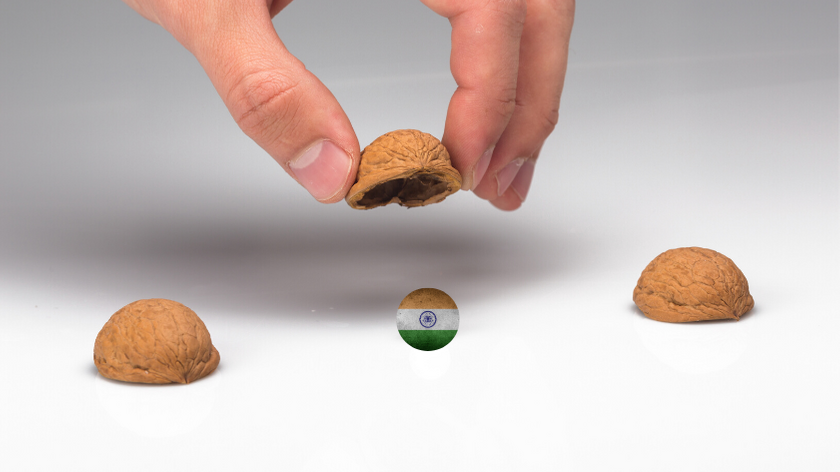Editors note: India is trying to be China with its tech transfer requirements and Made in India programs. Yet Modi mouths claims of defending “free trade” just as Chairman Xi did.
Indian Prime Minister Modi seeks to emulate Chinese success with increased protection for domestic firms
[Greg Ip | February 19, 2020 | WSJ]
In essence, Mr. Modi seeks to replicate the formula that made China the world’s No. 2 economy by welcoming foreign investment while protecting more of the domestic market for Indian companies. India doesn’t pose the same economic or geopolitical threat China does, but it is currently on a collision course with Mr. Trump, who is determined to punish any country that he thinks is taking advantage of the U.S.
India’s protectionist streak goes way back. Its first prime minister, Jawaharlal Nehru, leader of the Indian National Congress party, saw socialism and import-substitution as key to the country’s development and self-sufficiency. A foreign-exchange crisis in the early 1990s led to a wave of liberalization under both Congress and a coalition led by the Hindu nationalist Bharatiya Janata Party (BJP) that touched off a period of rapid growth in the 2000s. Yet extensive regulations, licenses, state control of banks and other key industries, and capricious policy-making continued to hamper entrepreneurship and investment.
Mr. Modi promised to change that when he led the BJP back to power in 2014 on a platform of “minimum government, maximum governance.” He used his remarks to the World Economic Forum in Davos, Switzerland, in 2018 to defend globalization against “the forces of protectionism.”
At home, Mr. Modi introduced important changes such as a streamlined bankruptcy code and a simplified national-sales tax.
But when it came to the outside world, India under Mr. Modi re-embraced protectionism. In its 2018 budget and again this year, the Modi government raised tariffs on numerous products. India’s average applied “most favored nation” tariff rose to 17% in 2018, one of the highest in the World Trade Organization.
The Modi government has also been a reluctant participant in multilateral trade pacts. It dragged out negotiations on a WTO agreement to ease custom barriers to imports in 2016, and last fall pulled out of the Regional Comprehensive Economic Partnership, an Asian trade bloc, out of fear of an influx of imports from China. Offsetting that, it has sought more bilateral trade deals.
Mr. Modi should never have been seen as a Western-style liberalizer. Unlike other right-wing parties that are instinctively pro-business and pro-globalization, the BJP wants to protect its core supporters of small businesses and traders from open competition with big companies, Indian economics journalist Swaminathan Aiyar said in a commentary for the Cato Institute in 2018. “The BJP aims to create national champions in both the public and private sectors, providing them with government support against foreign rivals,” he wrote.
Its current protectionist embrace differs from prior vintages when the goal was to make India self-sufficient. Instead, Mr. Aiyar wrote, Mr. Modi seeks to secure a place for Indian manufacturers in global supply chains.
Mr. Modi has opened up to foreign investment on the expectation it would help build domestic manufacturing capability, much as China did. “The Chinese model has a very powerful resonance in India,” said Arvind Subramanian, a former economic adviser to the Modi government and now lecturer at Harvard University. The view is, “They’ve built domestic champions, so why can’t we do the same?”
But Mr. Modi faces obstacles China didn’t. First, India’s regulations, for example on hiring, firing and acquiring land, are much more onerous for large than small companies. “It’s very difficult to become big and acquire scale,” Mr. Subramanian said. “If you can’t do that you can never become a manufacturing and exporting powerhouse.” In a recent article, Mr. Subramanian and a co-author show that Indian manufacturing peaked at a much lower share of gross domestic product than in China, a symptom of “premature deindustrialization.”
Second, China’s rise sparked a global backlash against free trade that militates against any country repeating its formula. While U.S. policy makers don’t see India as a strategic threat like China, Mr. Modi’s embrace of more strident Hindu nationalism, which has sparked protests by the country’s Muslim minority, has undercut some of that goodwill.
Mr. Trump claims to personally like Mr. Modi. That won’t spare India from a trade war with the U.S. any more than Mr. Trump’s affection for Chinese President Xi Jinping spared China.
Read the original article here.













